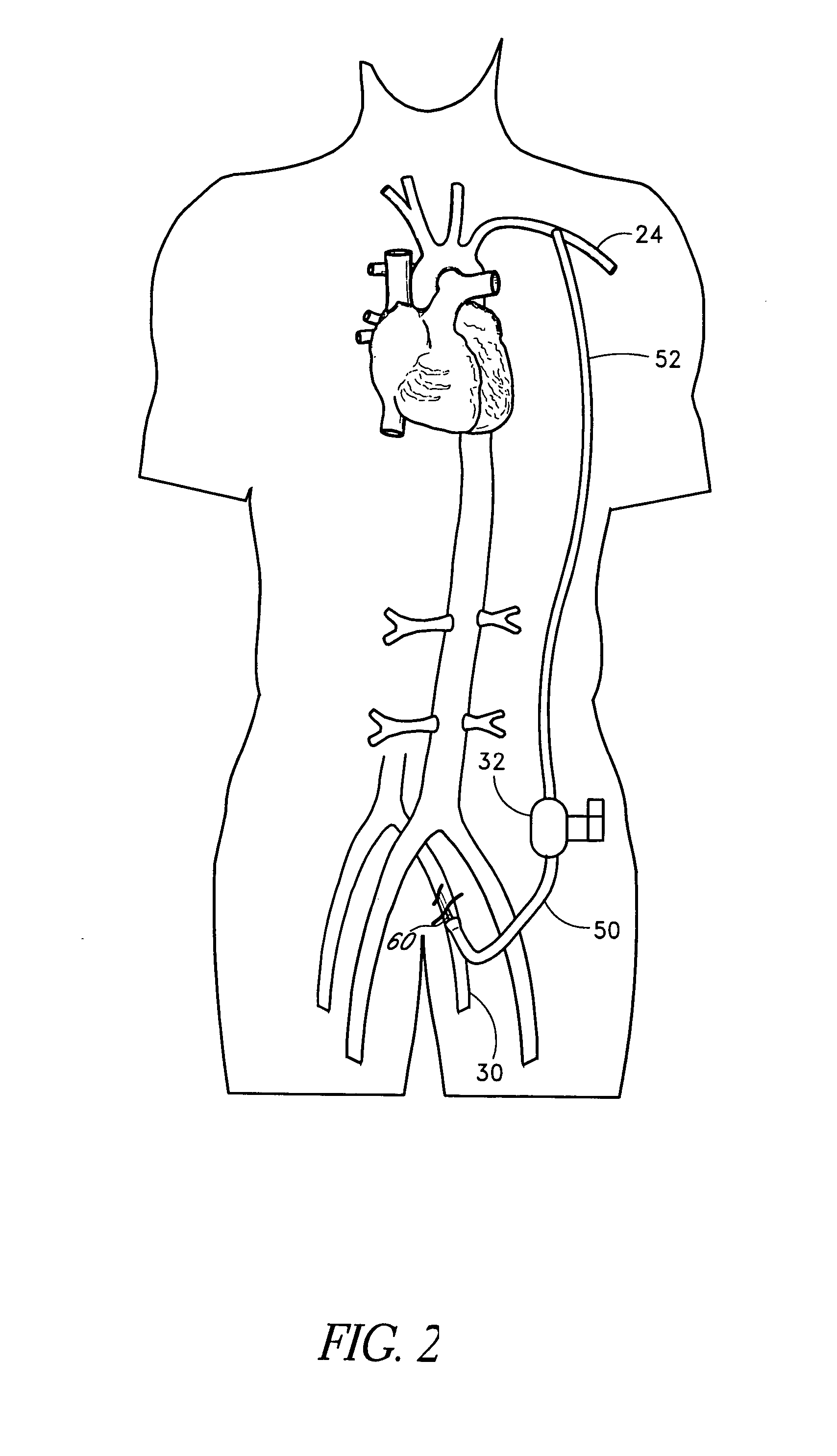Methods for minimally invasive vascular access
a vascular access and minimally invasive technology, applied in the field of minimally invasive vascular access, can solve the problems of difficult to precisely identify the location of such deep buried vessels from outside the patient's body, exacerbate the difficulty of accessing these vessels, and difficult to access the vessels
- Summary
- Abstract
- Description
- Claims
- Application Information
AI Technical Summary
Benefits of technology
Problems solved by technology
Method used
Image
Examples
Embodiment Construction
,” one will understand how the features of the preferred embodiments provide advantages, which include the capability to access high flow vessels without causing severe trauma to the patient, while maximizing the size of a vascular instrument to be deployed in the vessel.
[0008] A preferred method of the present invention provides minimally invasive access to a deeply buried target location in a patient's vasculature. Because the target location is buried deep beneath the patient's skin, a relatively large amount of bodily tissue and / or organs lies between a first percutaneous site and the target location. The present inventive method permits relatively easy access to the target location from a second percutaneous site where the vasculature is located relatively close to the skin. The vasculature at the target location includes a vessel segment with a first perimeter that is larger than a second perimeter of a second vessel segment located near the second percutaneous site. The volum...
PUM
 Login to View More
Login to View More Abstract
Description
Claims
Application Information
 Login to View More
Login to View More - R&D
- Intellectual Property
- Life Sciences
- Materials
- Tech Scout
- Unparalleled Data Quality
- Higher Quality Content
- 60% Fewer Hallucinations
Browse by: Latest US Patents, China's latest patents, Technical Efficacy Thesaurus, Application Domain, Technology Topic, Popular Technical Reports.
© 2025 PatSnap. All rights reserved.Legal|Privacy policy|Modern Slavery Act Transparency Statement|Sitemap|About US| Contact US: help@patsnap.com



